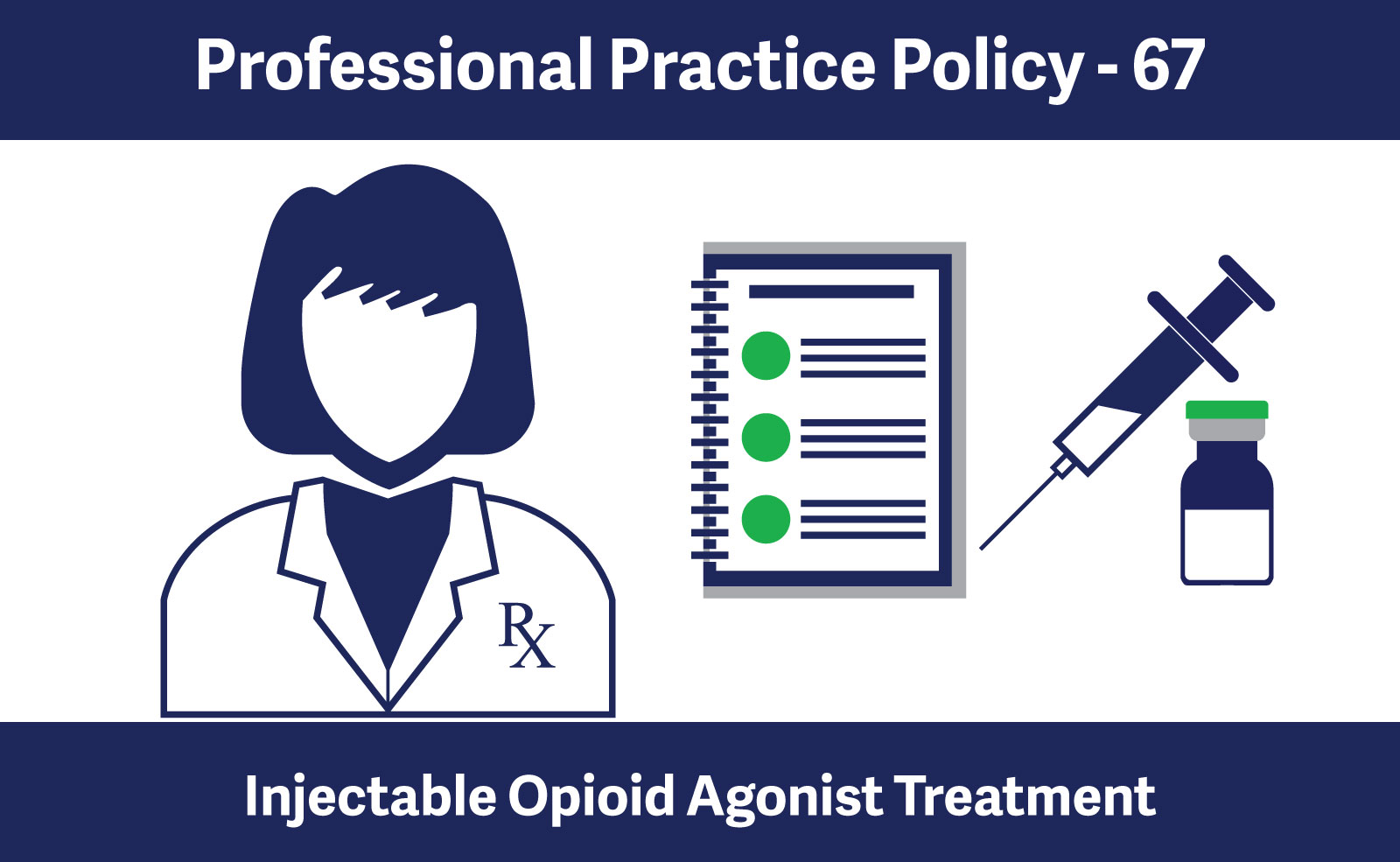New Policy on Injectable Opioid Agonist Treatment in Effect September 1, 2018
On September 1, 2018, the new Professional Practice Policy-67 for Injectable Opioid Agonist Treatment (iOAT), as well as an accompanying Policy Guide for Injectable Hydromorphone Maintenance Treatment will come into effect. These documents set out the requirements for the safe dispensing of injectable hydromorphone for the treatment of opioid use disorder.
PPP-67 sets out requirements regarding pharmacist supervision of injectable hydromorphone maintenance treatment within community pharmacies. The College currently has requirements in place for buprenorphine/naloxone, methadone and slow release oral morphine when used for oral opioid agonist treatment, the College has now added specific requirements regarding the dispensing of iOAT drugs.
Under this model, patients will self-administer injectable hydromorphone within their community pharmacy up to 3 times per day. Given the public safety risk associated with injectable hydromorphone being dispensed in the absence of specific requirements for safe dispensing of this drug, the College felt it important to develop requirements and guidance as soon as possible.
The new policy and accompanying guide align with “Guidance for Injectable Opioid Agonist Treatment for Opioid Use Disorder” released by the BC Centre on Substance Use (BCCSU) in October 2017. This document provides recommendations on how injectable opioid agonist treatments can be introduced into clinical practice to reduce harms associated with illicit injection drug use, while also engaging individuals in treatment for substance use disorder.
Oral and Injectable Opioid Agonist TreatmentOpioid agonist treatment is an effective treatment for substance use disorder of opioid drugs such as heroin, oxycodone, fentanyl and Percocet. The treatment involves taking either oral or injectable opioids agonists such as buprenorphine/naloxone, methadone, or slow-release oral morphine, or injectable hydromorphone in order to manage withdrawal and cravings for opioid drugs. These medications have been shown to help people with opioid use disorder stabilize their lives and reduce the harms related to their drug use. The BCCSU’s “Guidance for Injectable Opioid Agonist Treatment” was developed to provide treatment options to individuals who have not benefited from oral OAT drugs. These individuals face significant risks, including fatal overdose due in large part to the proliferation of fentanyl and other synthetic analogues into the illicit drug supply. |
Professional Practice Policy – 67: Injectable Opioid Agonist Treatment
(Effective September 1, 2018)

PPP-67 Policy Guide: Injectable Hydromorphone Maintenance Treatment (2018)
(Effective September 1, 2018)
Declaration of CompletionFull pharmacists may submit a declaration on eServices upon completion of the required knowledge and training components contained within Professional Practice Policy-67 “Injectable Opioid Agonist Treatment” and its accompanying Injectable Hydromorphone Maintenance Treatment Policy Guide (2018). See Principle 1.2.1 in the policy guide for details. Learn more about submitting declarations at bcpharmacists.org/declarations |

